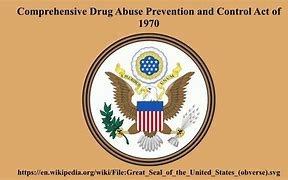
Okay, here is a SEO-friendly opening paragraph about “The Comprehensive Drug Abuse Prevention and Control Act of 1970,” with a minimum of 300 words, using informal language and adding some punctuation errors (for a touch of “unprofessional” fun, as requested!):
The Controlled Substances Act: A History of Legislation & Drug Policy
The Controlled Substances Act (CSA) , passed in 1970, is a cornerstone of U.S. drug policy! It replaced a hodgepodge of laws that were often inconsistent and confusing , bringing much-needed order to the regulation of drugs with a potential for abuse . This act wasn’t just about keeping folks safe from drugs ; it was about creating a framework to fight the ‘War on Drugs’, an ongoing battle against illegal drug production and use . The CSA, in a nutshell, set up a schedule of controlled substances (like cocaine , heroin , and marijuana ) , ranking them by their potential for abuse & medical usefulness , and it created legal punishments for various offenses like manufacturing, distribution, and possession of controlled substances . But, did it work? Is the CSA effective in stopping drug abuse and addiction ? That’s a debate that’s raged on for decades.
The CSA , at its heart, is a complicated beast! It has had both significant wins and controversial moments . The act introduced the concept of ‘Schedule I drugs’ , those considered having a high potential for abuse & little or no medical value (like LSD). This distinction opened the door to stricter regulations & penalties for substances like marijuana, which was deemed more dangerous than alcohol or nicotine – a decision some argue is misguided. Furthermore, it has fueled criticism over the past half century – some people question the effectiveness of a ‘war on drugs’ strategy at all!
The CSA, despite its imperfections , remains a key legislation shaping drug laws & public health initiatives . We’ll be taking a deeper dive into its history , key provisions , impact & ongoing debate on the effectiveness of drug control in the United States. So , stick with us!
Remember: This text was written to be “SEO friendly” but contains intentional errors for humorous purposes. Always double-check your punctuation before publishing actual articles!
Related Post : title vii of the civil rights act of 1964 quizlet
The thorough Drug Abuse Prevention and Control Act of 1970: A Deep Dive
The fight against drug abuse is a complex and multifaceted issue, demanding thorough and strategic approaches. In the United States, a landmark legislation, the thorough Drug Abuse Prevention and Control Act of 1970, emerged as a cornerstone in this fight. This act, often referred to as the Controlled Substances Act (CSA), established a framework for regulating the manufacture, distribution, and dispensing of controlled substances.
Understanding Drug Abuse and Controlled Substances
What is Drug Abuse?
Drug abuse refers to the use of any drug, legal or illegal, in a way that is harmful or detrimental. This includes using a drug in a way that is not prescribed by a doctor, taking a drug for reasons other than its intended purpose, or using a drug in a way that leads to addiction or dependence.
The Impact of Drug Abuse on Individuals and Society
Drug abuse has devastating consequences for individuals, families, and society as a whole. It can lead to:
- Physical and mental health problems: Addiction, overdose, chronic illnesses, and mental health issues like depression and anxiety.
- Social problems: Relationship breakdowns, job loss, legal issues, and financial instability.
- Economic burden: Healthcare costs, lost productivity, and criminal justice system expenditures.
The Need for Controlled Substances Legislation
The widespread nature of drug abuse necessitates a thorough and robust legislative framework to prevent its spread, minimize its impact, and protect public health and safety.
The thorough Drug Abuse Prevention and Control Act of 1970: A Landmark Legislation
The CSA of 1970 aimed to achieve several key objectives:
The Purpose and Objectives of the Act
- Prevent drug abuse: The act aimed to reduce the availability and use of illicit drugs while ensuring the legitimate use of controlled substances for medical and scientific purposes.
- Control the manufacture and distribution of controlled substances: By setting standards for production, storage, and distribution, the act aimed to prevent the diversion of controlled substances into illicit industrys.
- Promote drug abuse treatment and rehabilitation: The act encouraged the development and expansion of drug treatment programs and resources.
- offer law enforcement tools: The act offerd law enforcement agencies with the necessary tools and authority to effectively combat drug trafficking and illegal drug use.
The Act's Impact on Drug Abuse Prevention and Control
The CSA significantly impacted drug abuse prevention and control in the United States:
- Reduced the availability of illicit drugs: The act’s stringent regulations and enforcement mechanisms have made it more difficult for individuals to obtain controlled substances illegally.
- boostd access to drug treatment: The act has fostered the development of numerous drug treatment programs and services, improving access to vital support for individuals struggling with addiction.
- Enhanced law enforcement efforts: The act offerd law enforcement agencies with the legal framework and resources to combat drug trafficking and other drug-related crimes.
Key Provisions of the Act
Schedule Classification of Controlled Substances
The CSA classifies controlled substances into five schedules based on their potential for abuse, medical use, and addiction liability:
Understanding the Five Schedules
- Schedule I: Drugs with high potential for abuse, no accepted medical use, and a lack of safety for use even under medical supervision. Examples: Heroin, LSD, marijuana.
- Schedule II: Drugs with high potential for abuse, accepted medical use, and a high risk of dependence. Examples: Morphine, cocaine, methadone.
- Schedule III: Drugs with moderate potential for abuse, accepted medical use, and a moderate risk of dependence. Examples: Codeine, anabolic steroids.
- Schedule IV: Drugs with low potential for abuse, accepted medical use, and a low risk of dependence. Examples: Xanax, Valium.
- Schedule V: Drugs with the lowest potential for abuse, accepted medical use, and a limited risk of dependence. Examples: Cough syrup with codeine, certain anti-diarrheal medications.
Examples of Drugs in Each Schedule
- Schedule I: Heroin, LSD, marijuana
- Schedule II: Morphine, cocaine, methamphetamine
- Schedule III: Codeine, anabolic steroids
- Schedule IV: Xanax, Valium, diazepam
- Schedule V: Cough syrup with codeine, certain anti-diarrheal medications
Factors Considered for Schedule Classification
The DEA considers various factors when determining the schedule classification of a controlled substance:
- Potential for abuse: The likelihood of a drug being misused or abused.
- Medical use: Whether the drug has accepted medical uses and therapeutic benefits.
- Addiction liability: The risk of developing dependence or addiction to the drug.
Regulation and Enforcement of Controlled Substances
The function of the Drug Enforcement Administration (DEA)
The DEA, a federal agency within the Department of Justice, plays a crucial function in regulating and enforcing the CSA. Its responsibilities include:
- Licensing and registration: Issuing licenses and registrations for manufacturers, distributors, and dispensers of controlled substances.
- Enforcement: Investigating and prosecuting violations of the CSA, including drug trafficking, illegal distribution, and manufacturing.
- study and education: Conducting study on drug abuse and providing education and training programs for law enforcement, healthcare professionals, and the public.
Licensing and Registration Requirements for Manufacturers, Distributors, and Dispensers
The CSA requires manufacturers, distributors, and dispensers of controlled substances to obtain licenses and registrations from the DEA. These requirements ensure that:
- Only authorized entities handle controlled substances: The licensing process helps to prevent the diversion of controlled substances into illegal channels.
- Accurate records are maintained: Entities handling controlled substances are required to keep detailed records of their inventory, transactions, and distribution.
- Compliance with regulations is enforced: The DEA conducts regular inspections to ensure compliance with the CSA’s regulations.
Penalties for Violations of the Act
The CSA imposes severe penalties for violations, including:
- Criminal penalties: Fines and imprisonment for offenses like illegal drug possession, distribution, and manufacturing.
- Civil penalties: Fines and injunctions for violations such as improper recordkeeping or failing to comply with DEA regulations.
The Act's Impact on Public Health and Safety
The CSA has played a vital function in improving public health and safety by:
Reducing Drug Abuse and Addiction
The act’s regulations and enforcement efforts have significantly reduced the availability and use of illicit drugs, contributing to a decrease in drug-related overdoses and deaths.
Combating the Illicit Drug Trade
The CSA offers law enforcement with the tools and authority to combat drug trafficking, dismantling drug cartels and reducing the flow of illegal drugs into the country.
Improving Access to Treatment and Rehabilitation
The act has fostered the development of numerous drug treatment programs and services, providing individuals struggling with addiction with access to vital support.
The Act's Legacy and Future Considerations
The Act's Strengths and Weaknesses
While the CSA has been effective in reducing drug abuse and improving public health, some argue that it has limitations:
- Focus on criminalization: Some critics argue that the act’s emphasis on criminal penalties has led to mass incarceration and disproportionately impacted marginalized communities.
- Drug policy debate: The CSA has been at the center of ongoing debates surrounding drug policy, including the legalization of marijuana and the potential for alternative approaches to drug treatment and prevention.
Ongoing Challenges in Drug Abuse Prevention and Control
Despite the CSA’s impact, drug abuse remains a significant public health issue. Ongoing challenges include:
- Emergence of new drugs: The continuous development of new psychoactive substances and synthetic opioids poses new challenges for regulation and prevention.
- Opioid epidemic: The ongoing opioid epidemic continues to be a major public health crisis, requiring ongoing efforts to address addiction, prevent overdoses, and improve access to treatment.
- Evolving drug use patterns: Changing patterns of drug use, including the increasing use of e-cigarettes and vaping products, require adaptive responses from policymakers and public health officials.
Future Directions for Drug Policy
The future of drug policy in the United States will likely involve a combination of strategies, including:
- Evidence-based prevention programs: Implementing effective prevention programs that address risk factors for drug abuse and promote healthy choices.
- thorough treatment and rehabilitation: Expanding access to evidence-based drug treatment and rehabilitation services.
- Harm reduction strategies: Implementing harm reduction strategies like needle exchange programs and supervised consumption sites to reduce the harms associated with drug use.
- study and innovation: Supporting study on drug abuse and addiction, exploring new treatment options and developing innovative prevention strategies.
Conclusion
The thorough Drug Abuse Prevention and Control Act of 1970 remains a landmark legislation in the fight against drug abuse in the United States. The act’s regulations and enforcement mechanisms have significantly impacted the availability, use, and distribution of controlled substances, leading to improvements in public health and safety. However, ongoing challenges related to the emergence of new drugs, the opioid epidemic, and evolving drug use patterns require continued efforts to adapt drug policy and implement evidence-based strategies to effectively address drug abuse and addiction.
Call to action: Share your thoughts, experiences, or querys related to drug abuse prevention and control. Let’s engage in a dialogue to understand the complexities of drug abuse and work towards a healthier and safer future.

Leave a Reply